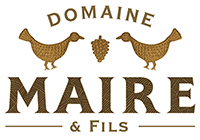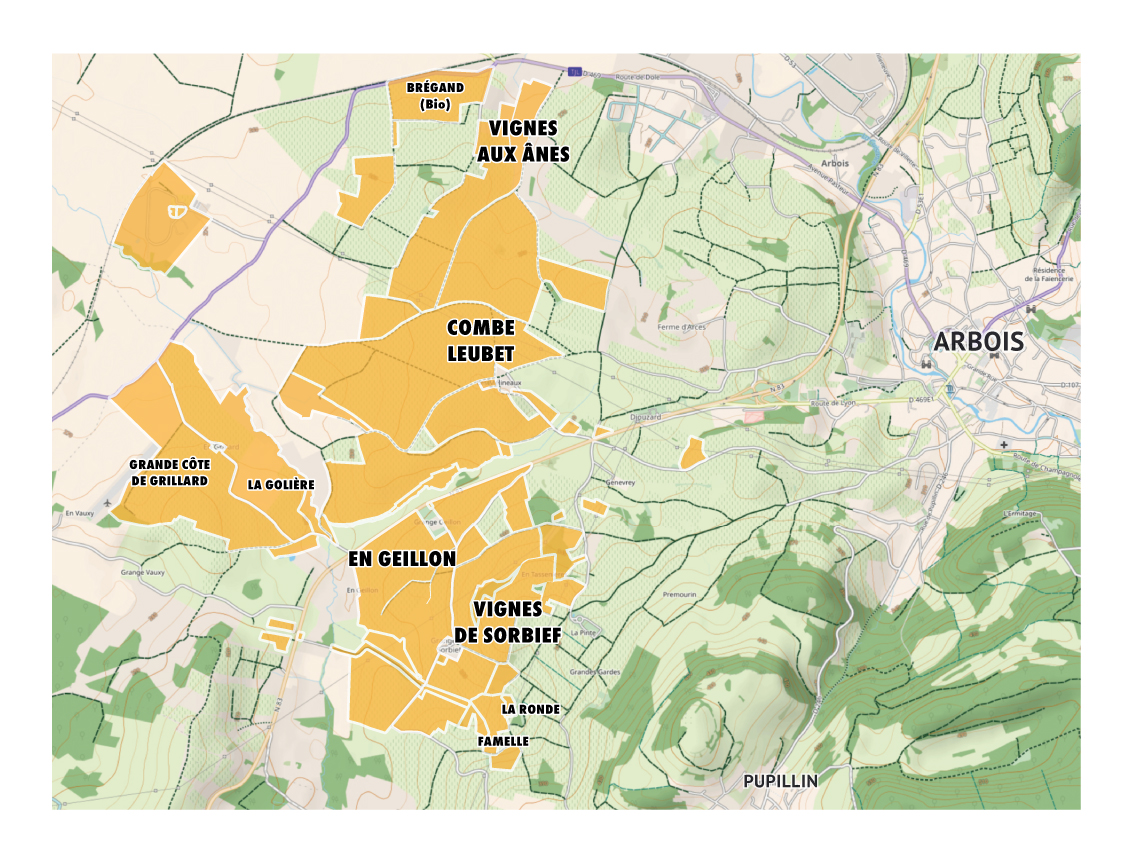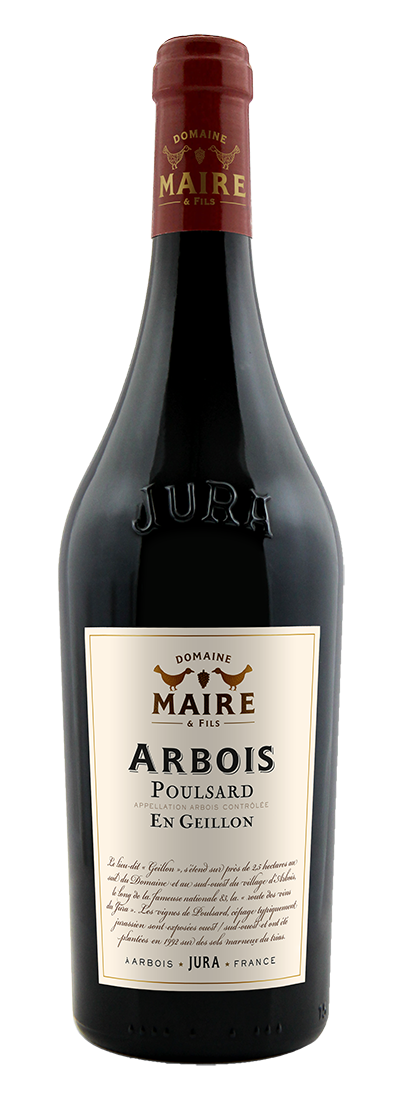ARBOIS POULSARD EN GEILLON

click on one of the vintages below for further information
Several generations have been necessary to patiently built one of the largest and greatest estates in the area, focused on key appellations such as Château-Chalon, l’Étoile and Arbois. The Domaine MAIRE & Fils covers nowadays 234 hectares of vines producing all the area grapes varieties.
The Poulsard, an old native grape variety, also known as Ploussard, appreciates strong soils, with marl and clay.
- The nose offers aromas of small red fruits and fine notes of spices.
- The mouth is elegant, generous with some wildness and underwood notes.
The Arbois AOC is the oldest and largest of the Jura's four geographic AOCs. In particular, it was France's first AOC (created in 1937).
Its name originates in the Celtic words "ar" and "bois" that would mean "fertile land".
In order to create this harmonious Arbois Poulsard, we identified and selected one of the best plot adapted to this grape variety in the historical family Maire’s estate: The “En Geillon” parcel located in the south of the Domaine and to the southwest of the Arbois village along the famous “Route des vins du Jura” (the Jura wine road) RN 83:
- Surface: 2,43 Ha
- West and North West exposure
- Average age of vines : 26 years ( 1992 )
- Soils: marls from the Triassic period
The work in the vines, is based on the respect of the nature and the soil. For young vines, located on steep slopes, to avoid erosion, we cultivate a row out of two, practice soil reassembly to aerate the lands subjected to settlement due to moisture, and grass with plants. Such as clover, which, by competing on the vine, can modulate its mineral and water supply and control its vigour and yield.
The Guyot double size is necessary to better control its performance.


